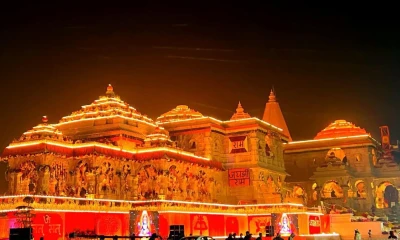Prime Minister Narendra Modi’s
inauguration of the Ram Temple’s first phase in Ayodhya marks a pivotal moment
in the government’s multimillion-dollar efforts to enhance Hindu pilgrimage
sites, aiming to elevate Bharat’s standing in spiritual tourism.
The extensive makeover of Ayodhya,
costing $6 billion, and substantial investments in pilgrimage destinations, totalling
nearly $120 million over the last decade, position Bharat to become a spiritual
tourism powerhouse.
Industry analysts, such as Jefferies,
project that the Ram Temple alone could draw an annual footfall of up to 100
million visitors, surpassing iconic global destinations like Vatican City and
Mecca.
The strategic focus on spiritual tourism
has already yielded notable results in Varanasi, where the Kashi Vishwanath
Corridor has transformed the pilgrimage experience, attracting over 130 million
tourists since its inauguration in 2021.
This surge in footfall has led to a
substantial economic upturn for locals and the hospitality sector, with tourism
income increasing by up to 65 per cent.
Tourism, contributing around 7 per cent
to Bharat’s economy, stands to gain significantly from the ongoing temple
projects and renovations. With the ambitious Ayodhya initiative and other
developments, PM Modi’s electoral prospects receive a considerable boost,
fulfilling a longstanding election pledge of the Bharatiya Janata Party (BJP).
Out of the 46 projects under the
Ministry of Tourism’s Pilgrimage Rejuvenation and Spiritual Heritage
Augmentation Drive since 2014, around half a dozen focus on Muslim or Sikh
sites, reflecting a broader emphasis on Bharat’s Hindu majority population.

















